Why Do We Eat Popcorn at Movie Theaters?
National Popcorn Day, today's discounted buckets, + yesterday's cinematic snack history
If you are reading this newsletter on the day of publishing, I am pleased to announce it is National Popcorn Day! This unofficial holiday, which has been around in some form since the 1970s, isn’t entirely useless: Today, both popcorn brands and movie theater chains across the globe are offering surprisingly really solid discounts on everyone’s favorite puffed snack. We’re talking free refills and large popcorn prices you haven’t seen in fifteen years. If you need a date idea for tonight, your local cinema is your best bet.
Those who know me know I am a certified popcorn freak.
My love for popcorn is my defining trait in the eyes of many. Conservatively, I would say I easily spent around 50% of the evenings in my teens with a bag of microwaved popcorn, and an equal amount of evenings in my 20s shaking a metal pot on the stove filled with oil, spices, and popcorn kernels.
Do any of us, though, really stop to think about why we eat popcorn at the movie theater? Why do we associate heated and puffed up kernels of corn with watching our favorite films?
Disclaimer: Film Flavor is a newsletter written for entertainment purposes only. While I do my best to write meaningful posts with good intentions and cite sources when I have the bandwidth, I do not have the capacity nor the expertise to fact-check research as a trained professional journalist would. Despite my best efforts, the Film Flavor newsletter may contain omissions, errors, or mistakes and cannot be relied upon for accuracy or correctness. Additionally, I am not a chef, doctor, nutritionist, or food professional, and it is the responsibility of the reader to consult qualified professionals and use good judgement to decide whether the ingredients, foods, drinks, recipes, and cooking instructions mentioned within Film Flavor are safe to use, follow, or consume. The Film Flavor newsletter does not contain any professional advice or guidance and its contents should not be considered as such. Read the full Film Flavor disclaimer on the Film Flavor About Page, here. Thank you!
A Brief History of Popcorn at the Movies
Corn, or maize, was first cultivated from a wild grass roughly 8,000 to 9,000 years ago in Mexico, and the first known instance of popping corn kernels dates back to about 6,700 years ago in Peru. Over the next few millennia, corn traversed the globe, and eventually made its way up through western North America. (Legend says popcorn was presented to the pilgrims by Native Americans, but available evidence shows pop-able1 corn varieties were only grown on the west coast until the 19th century.)

While the specific dates are debatable, by the mid-1800s, popcorn had popped off, making its way into picnics and parties across the United States. By the turn of the century, popcorn popping machines were invented and hitting carnivals and circuses across the country. Unlike potato chips and other salty snacks of the time, popcorn could be made on the spot, from a cart, nary a kitchen in sight.
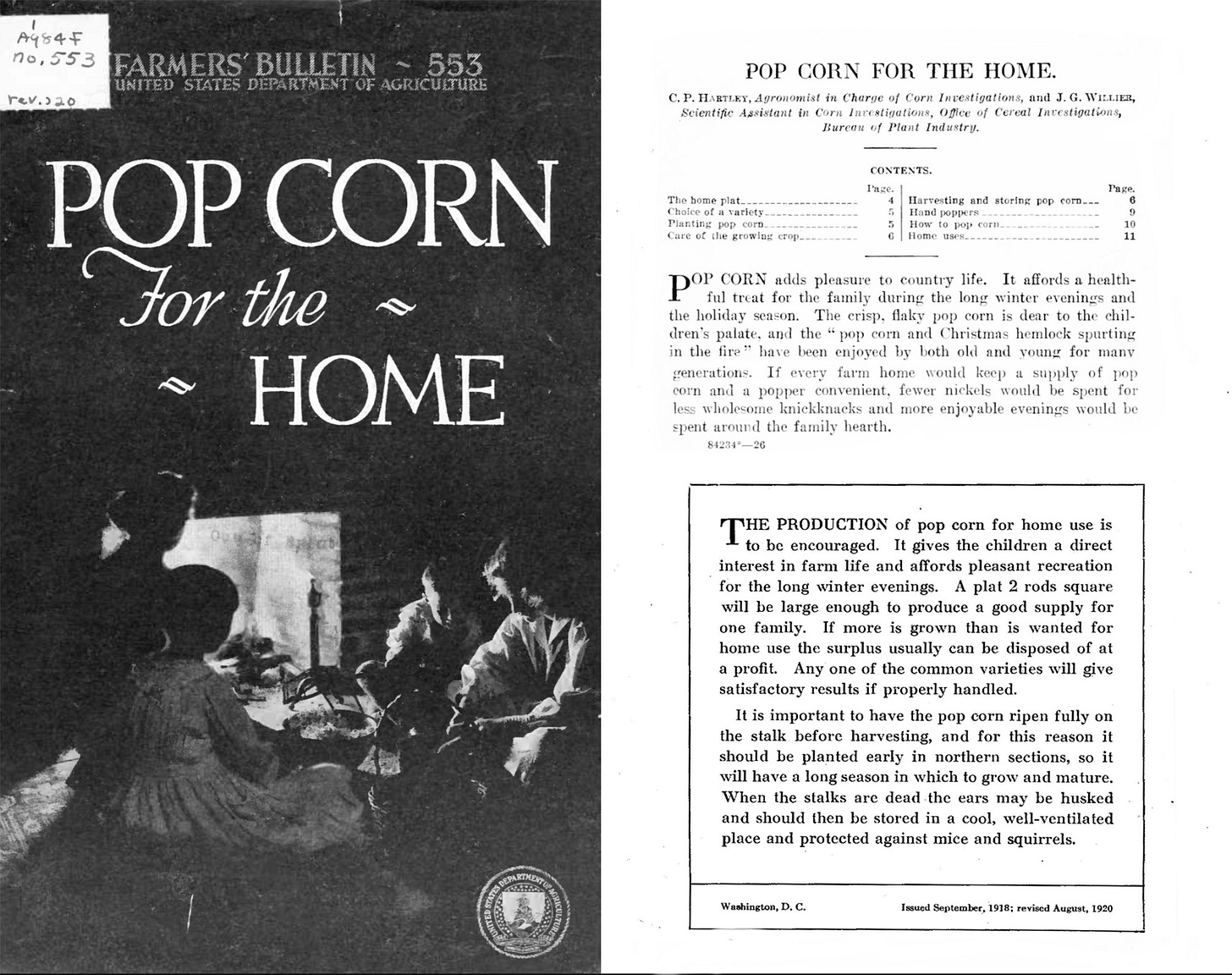
Silent Cinemas + The Appetite for Popcorn
When silent films hit the market, movie theaters — modeled after the decidedly stuffier “real” theaters and opera houses — were hesitant to allow any sort of food in their buildings. Movie theater owners didn’t want to deal with the noise, the trash, nor the odors that popcorn and other concessions might bring into their establishments.
Allegedly,2 early movie theaters even hung signs outside their coatrooms, asking patrons to check their popcorn with their bags, hats, and coats. (See update in footnotes, below.)
Though food and drink were outright banned from most theaters, Popcorn vendors would still set up their stands outside of theaters — rumor has it, vendors would even walk up and down the aisles selling cracker jacks — for those who wanted to risk it and shove a bag up their bloomers.
The Talkies + Concession Profits
In 1927, the introduction of the “Talkies,” aka films with sound, changed everything. You no longer needed to be literate to enjoy films, and movie theater clientele expanded. By 1930, 90 million people per week were watching movies in theaters.
To keep up with diversifying audience demographics, and the financial struggles through the Great Depression, movie theaters finally gave in and started offering soda and popcorn, along with cheap tickets. After all, the crunching and chewing would now be drowned out by the movies’ sounds, and the snacks kept people content during trying times. By the end of the Great Depression, while many movie theaters failed, the ones that sold popcorn were by and large left standing.
In 1934, the USA harvested approximately 5 million pounds of popcorn. By 1940, that number grew to 100 million pounds.
During World War II, sugar was rationed and prices shot up, all but solidifying popcorn as the one of the only concessions movie theaters could turn a hefty profit from.
Popcorn: The Reigning Champion
By the 1950s, popcorn at the movies was a must for much of the population. The 1950s also gave way to pre-screening and intermission advertisements asking (or telling) audiences to rush to the concession stand and grab a bucket.
One such advertisement, Let’s All Go To the Lobby (1957, above) was inducted into the official National Film Registry in 2000 for its cultural significance. Seen by millions, the interstitial is now scarred into the memories of baby boomers across the nation.
If you made it this far, I would herby like to treat you to a… vulnerable professional photograph of me posing in front my hometown movie theater concession stand when I was a senior in high school.
This photograph is for your eyes only, dear reader. As you might suspect, I will be promptly deleting the image from the Film Flavor website after you’ve all had a chance to point, throw back your heads and laugh.
Disclaimer: Film Flavor is a newsletter written for entertainment purposes only. While I do my best to write meaningful posts with good intentions and cite sources when I have the bandwidth, I do not have the capacity nor the expertise to fact-check research as a trained professional journalist would. Despite my best efforts, the Film Flavor newsletter may contain omissions, errors, or mistakes and cannot be relied upon for accuracy or correctness. Additionally, I am not a chef, doctor, nutritionist, or food professional, and it is the responsibility of the reader to consult qualified professionals and use good judgement to decide whether the ingredients, foods, drinks, recipes, and cooking instructions mentioned within Film Flavor are safe to use, follow, or consume. The Film Flavor newsletter does not contain any professional advice or guidance and its contents should not be considered as such. Read the full Film Flavor disclaimer on the Film Flavor About Page, here. Thank you!
In Case You Missed It…
Thank you so much for reading! If you’re interested in more Film Flavor, please consider subscribing and sharing this post with friends and foes via the buttons below!
And please, leave me a comment + let me know any question you have about popcorn movie theater history, and what percentage of my body you think is made up of popcorn given my described intake.
With Gratitude,
An impressive amount of corn varieties are in existence, but only some of them can be popped. The science behind this determination, I’m told, lies in the porousness of the kernel’s shell as well as its water content.
Unfortunately, I couldn’t find any primary sources regarding the popcorn-banning signs in movie theaters in the 1920s. In fact, it seems there are hardly any photographs showing the interior of a movie theater in the 1920s or 1930s on the internet. I plan to find hard knock proof via hitting up some historical societies and the usual suspects, but those updates will come at a later date. To me, this type of conundrum always prompts me to wonder what about our modern age feels so obvious and mundane that no one bothers documenting it?
UPDATE (September 2024): Eureka! After some digging, I’ve learned this checking-popcorn-at-the-door anecdote comes from an edition of The Saturday Evening Post published May 21st, 1949 (Vol 221, Issue 47, Page 141.) In his article entitled “Popcorn Crazy”, Arthur Bartlett writes “Today, most of our movie houses sell popcorn in their lobbies, but theater men were almost universally antipopcorn before the 1930’s. A few, notably the Loew chain, are still holding out, and some even require that customers arrive with popcorn check it at the door. The majority, however, have long since succumbed to the argument that popcorn is part of our entertainment tradition — and to the enticing profits that accrue from it.”
Now if only we could find a picture of popcorn-banned signage! On that matter, I’ll keep you posted.


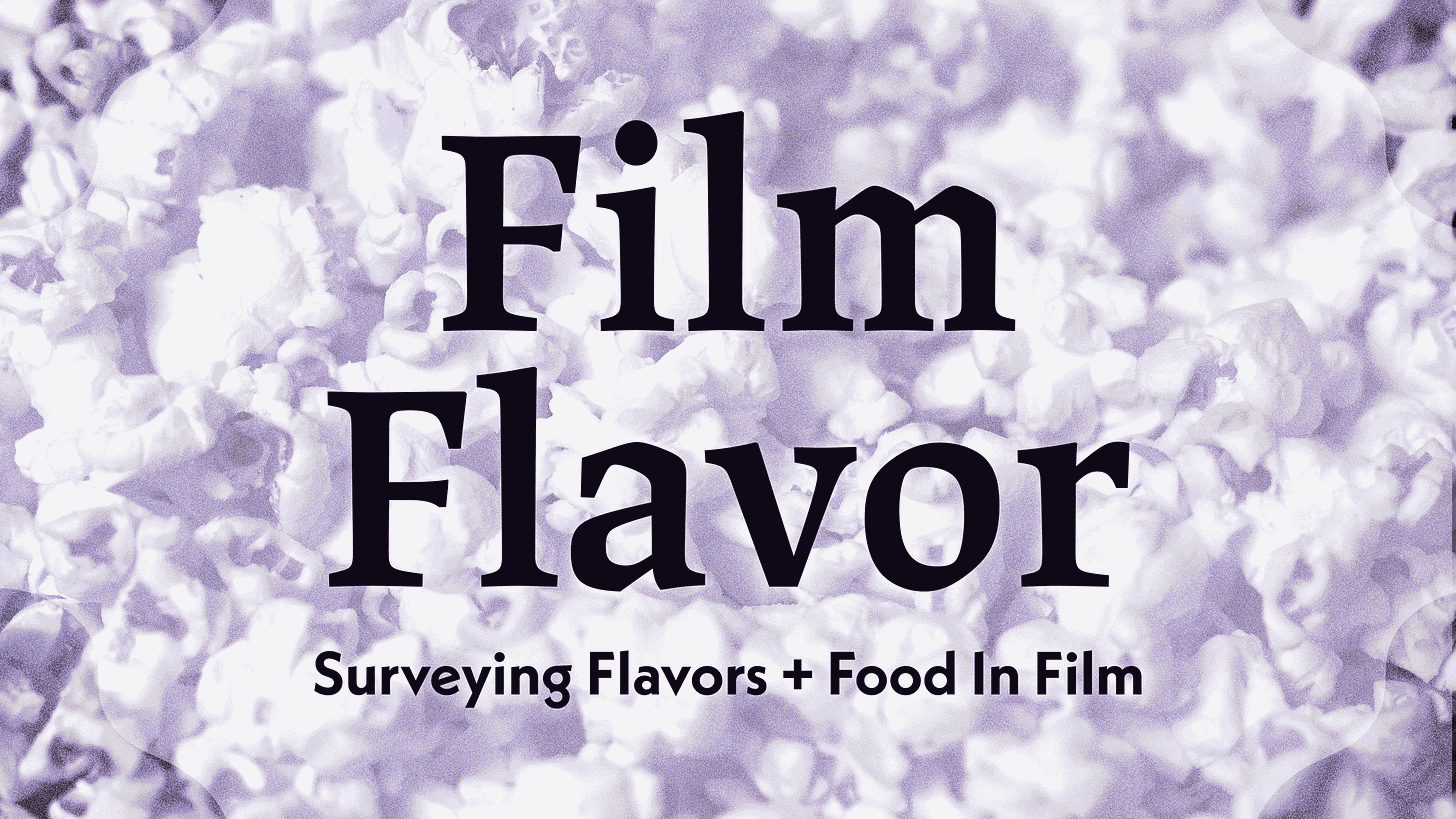
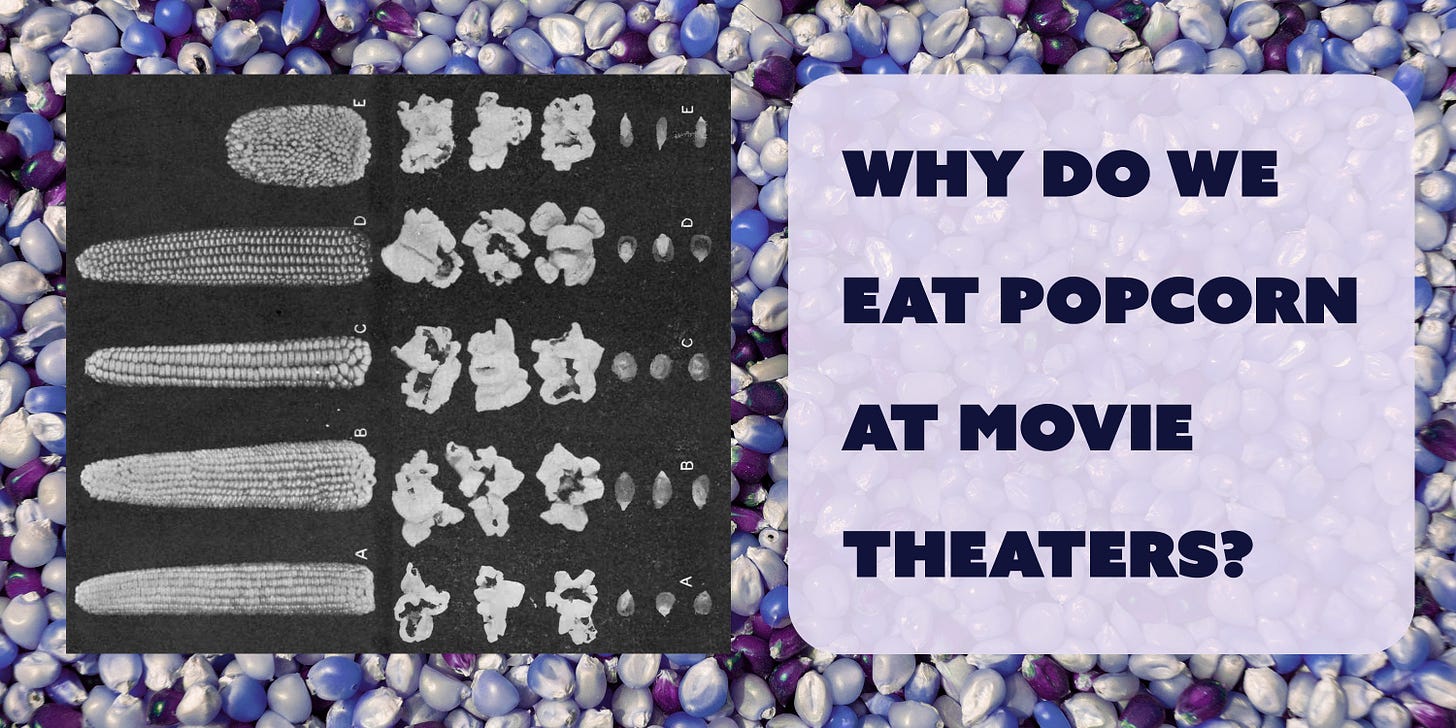
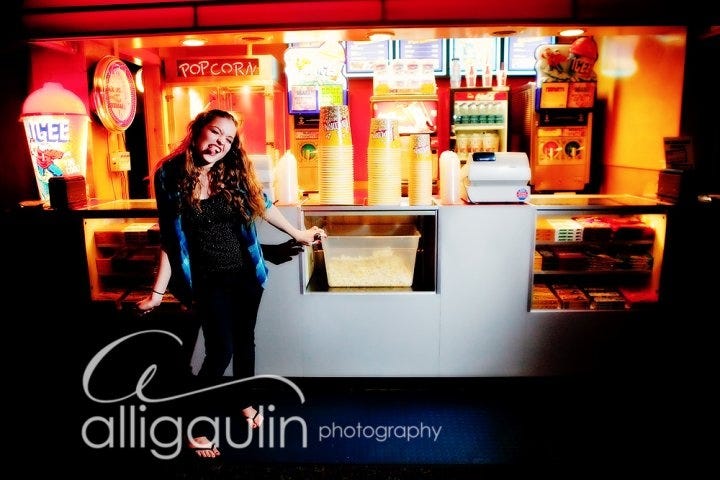
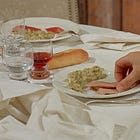



This is beautiful! Nothing like vegan freshly popped corn and a film ❤️
Love this! I did a history of popcorn in the U.K.!
https://popped.substack.com/p/sweet-or-salted